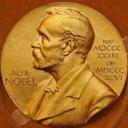Yahoo Answers is shutting down on May 4th, 2021 (Eastern Time) and beginning April 20th, 2021 (Eastern Time) the Yahoo Answers website will be in read-only mode. There will be no changes to other Yahoo properties or services, or your Yahoo account. You can find more information about the Yahoo Answers shutdown and how to download your data on this help page.
Trending News
Does Moon Rotate? Space Time Curvature?
I learned as a wee lad that the moon rotates in synch with its orbit of the Earth. Tidal forces explained this to my satisfaction, until 5 minutes ago. If the Sun were to disappear, the planets would fly off in a direction orthogonal to the direction of where the Sun was. They would still spin.
Does curved space time create the illusion that the Moon is spinning? I am now thinking of it as a non-rotating object moving in a straight line, but on the curved path created by Earth's gravity.
Think of it this way. You can do yo-yo tricks where the string is extended all the way and the yo-yo is still spinning, remember the "walking the dog" trick? While this is happening a skilled person could spin in circles and have the yo-yo fly in wide circles around him/her. The yo-yo is orbiting the person and spinning on it's own axis. Friction would stop the yo-yo's spinning yet it would still orbit the person. Now the same side of the yo-yo would face the person at all times just like the moon....yet it isn't "really" spinning. If this experiment happened in space and the person let go the yo-yo would fly off but not spin. Right?
@acetek. I know that crazy things happen when there is no friction. However the oceans have , very very slowly slowed the rotation of the Moon. I know this isn't friction. I used the yo-yo example because there is a force, in this case friction, which gradually slows it. If the yo-yo would not "spin" without the person.
Would the Moon continue to spin if the Earth and Sun vanished?
Wished I had included this part in the original question.
Would the Moon continue to spin if the Earth and Sun vanished?
5 Answers
- RickBLv 78 years agoFavorite Answer
These are thoughtful questions (refreshing, since most posters here just want somebody to do their homework for them!)
The moon does spin, at a rate of about 1 revolution per month. If the sun disappeared, the earth would fly off at a tangent, the moon would CONTINUE orbiting the earth once per month and would continue spinning at once per month.
More to the point, if the EARTH disappeared, the moon would continue in orbit around the SUN, but would MAINTAIN its once-a-month spin rate.
In the yo-yo analogy: When the same side of the yo-yo continually faces the (rotating) person, the yo-yo IS REALLY spinning, and if the person let go of the yo-yo (or cut the string), the yo-yo WOULD CONTINUE to spin. It has an angular momentum which is maintained after the string is cut.
> "Would the Moon continue to spin if the Earth and Sun vanished?"
Good question. The answer is "Yes."
> "Does curved space time create the illusion that the Moon is spinning?"
No. The moon posesses spin angular momentum which is independent of the curvature of spacetime.
Source(s): B. Sc., Physics - Roger KLv 78 years ago
Depends on your frame of reference. From the earth, the moon does not appear to rotate around an axis. From anywhere else, the moon is clearly rotating around its axis.
Neither the rotation of the moon, nor the orbital motion of the moon are illusions. They happen. I think you are making the whole thing more complicated. Curved space due to the mass of the earth could be said to be forcing the moon to orbit the earth, but the path is only straight if you look from a particular orientation. From above, the path is clearly curved. The axial rotation of the moon is a totally different event than the orbital motion, but you seem to be conflating the two in some of your description.
If the gravitational force of the sun disappeared in an instant, then the planets would continue about as you describe. Yet the earth and moon would continue to orbit around their barycenter, as they do now. The difference is that instead of describing an ellipse around the sun, they would be doing that while traveling away from the center of the solar system.
- ?Lv 68 years ago
If you imagine the same side of the moon always facing away from earth, out towards space, it's easy to think that it's not rotating. However, the truth is that if the moon were not rotating, the same side of the moon would always face the Sun as it orbits around Earth, which means we would eventually see both sides of the moon from Earth's perspective over the course of it's orbit.
It's a little abstract, but the reason we only see one side of the Moon is BECAUSE it rotates.
You can draw this out on a piece of paper. Draw a circle to represent Earth. Draw another circle around it to represent the orbit of the moon. Far to the left draw the Sun. Cut out a round piece of paper to represent the moon and draw a red x mark near the edge of it. Now put the moon down in between the Sun and Earth along the orbital path with the red x mark facing the Sun and then with your finger on the moon move the moon along it's orbit without rotating it. You'll notivce 180 degrees later the red x mark will be facing Earth when it was facing away before. This means we would see both sides of the moon over it's orbit.
Now, put the moon back at the starting position again, with the red x facing towards Earth this time. Put your finger on the moon and move the moon along its orbit while keeping the red x mark facing Earth the whole time. You won't be able to do it without twisting your arm. That twisting motion is representative of the moon rotating.
Here's a good video showing the Moon in both cases (rotating and not rotating) and the results:
- Ray;mondLv 78 years ago
I can't help with the yo-yo part. The moon keeps the same face toward Earth, so it makes one turn ( with respect to the distant stars) each 27 days, so yes, in sync. If the sun's gravity was magically removed, Earth would go off on a tangent = close to a straight line with respect to the distant stars. Earth's moon would continue orbit Earth in much the same way as before. Neil
- How do you think about the answers? You can sign in to vote the answer.
- ?Lv 44 years ago
I surely have had countless gravity theories over the years that throughout the time of touch greater beneficial dimensions and their curvature, the ingredient isn't everyone cares till you could prepare it or till you could talk fancy adequate and flaunt adequate stages to get funds or perhaps then no person cares. All i'm tryin to declare is shop questioning approximately it yet don't get to wild throwing techniques around without experiments or any ingredient backing you up.





